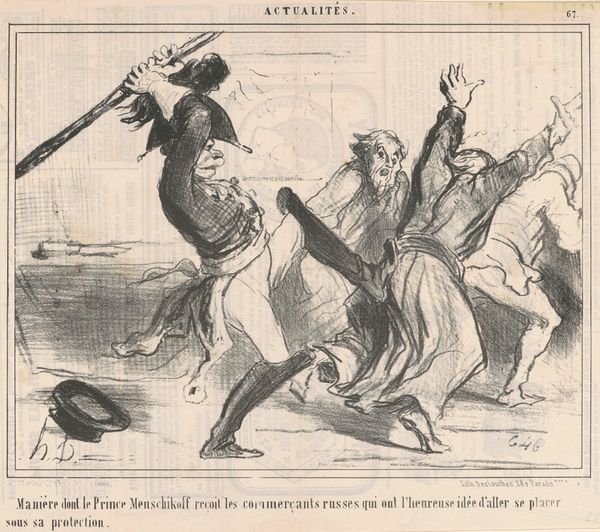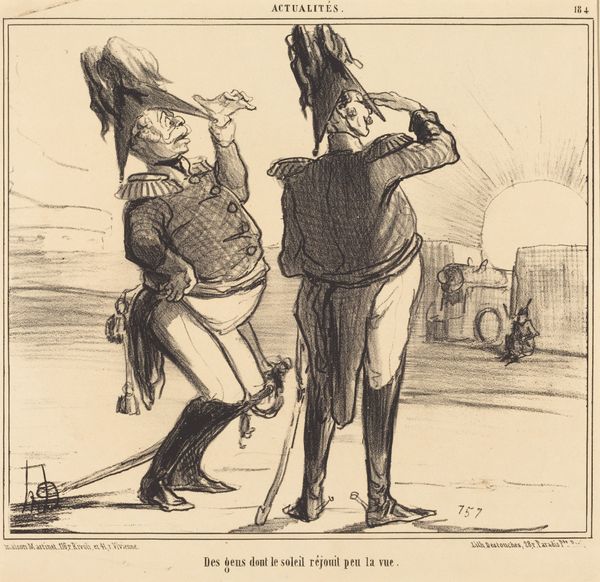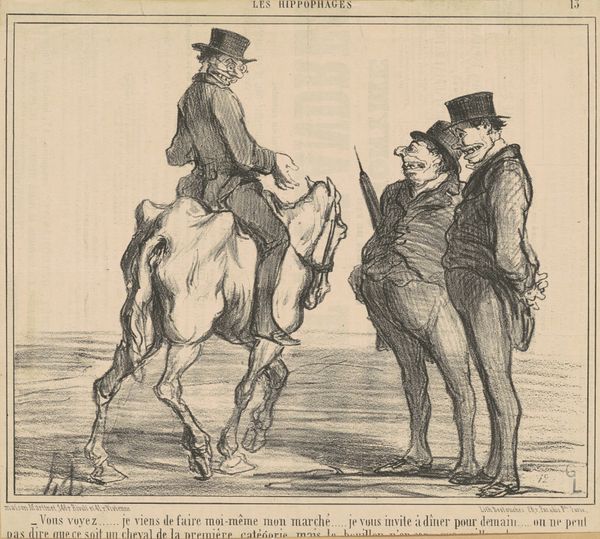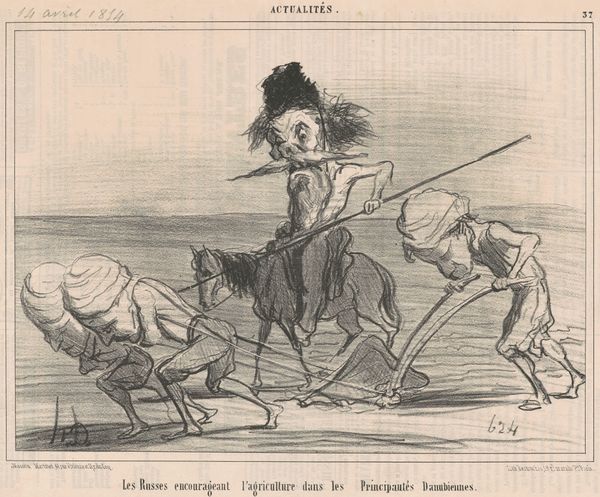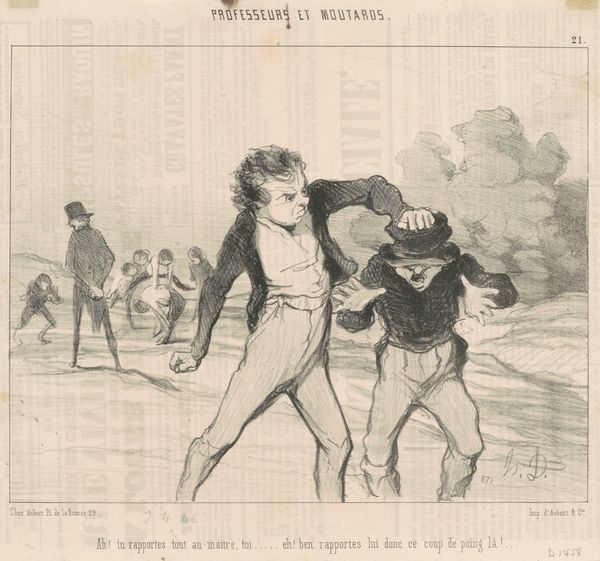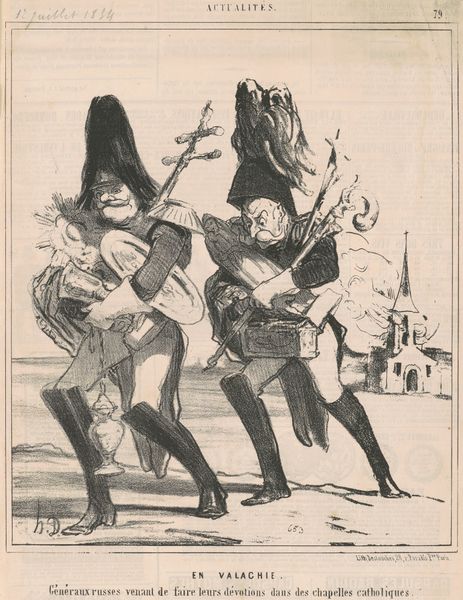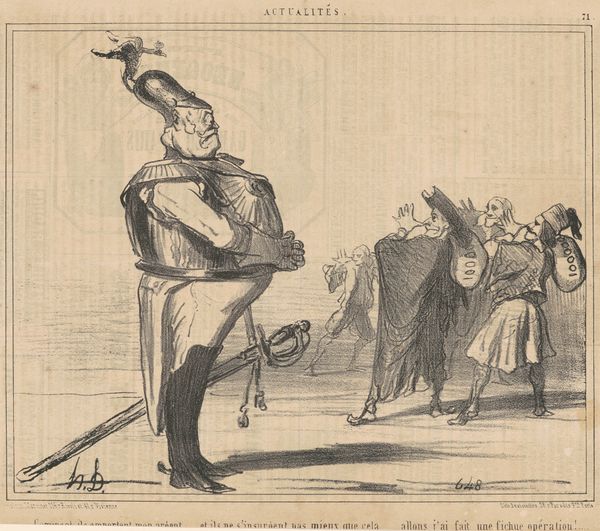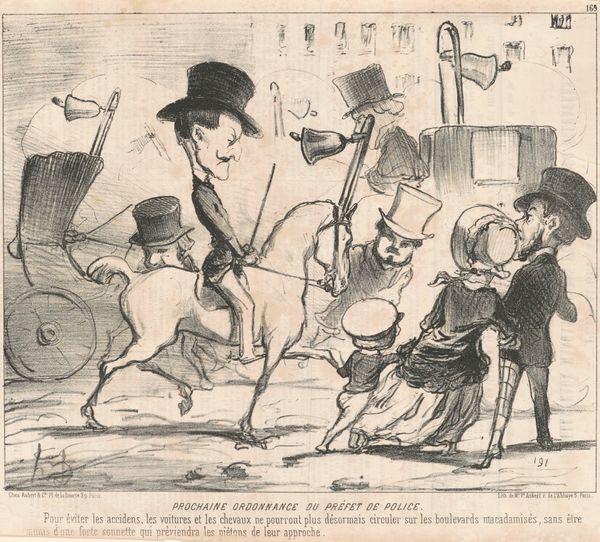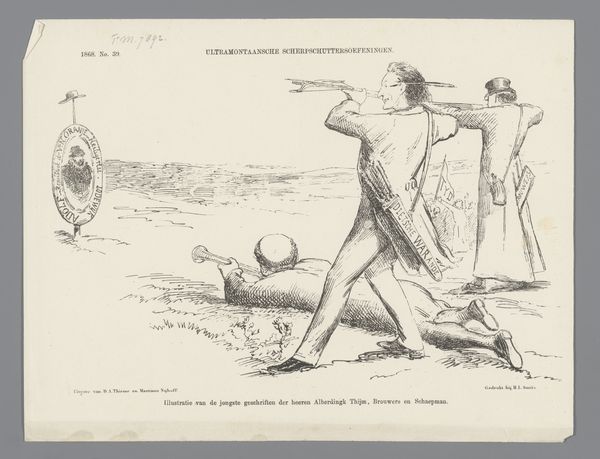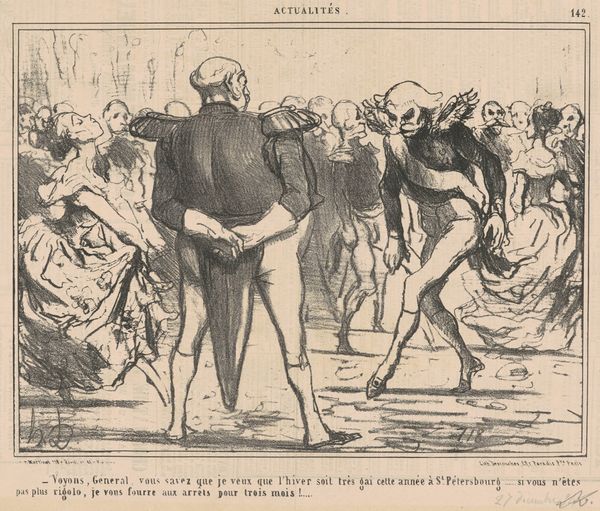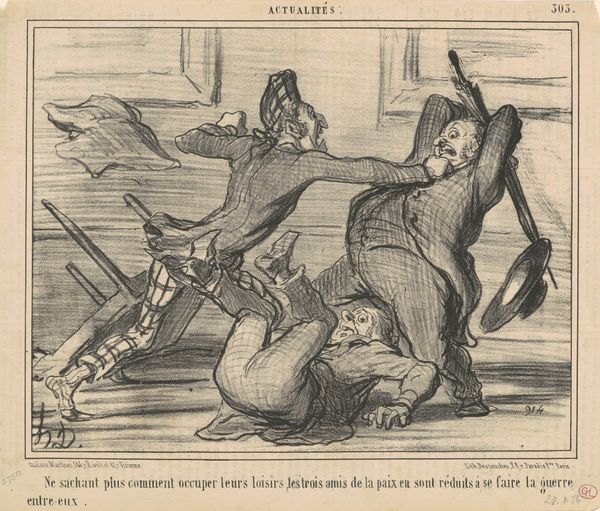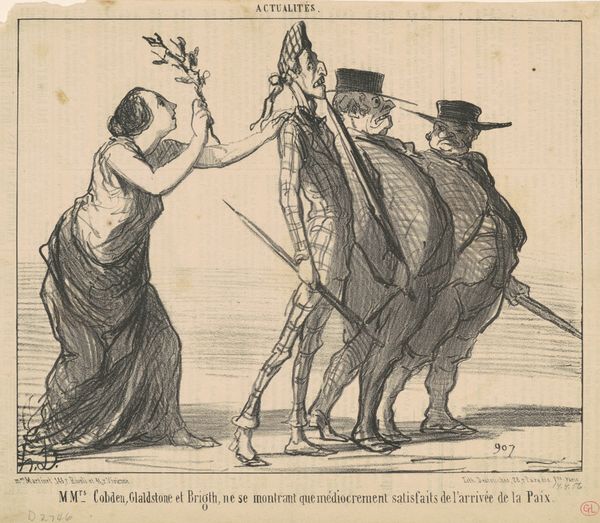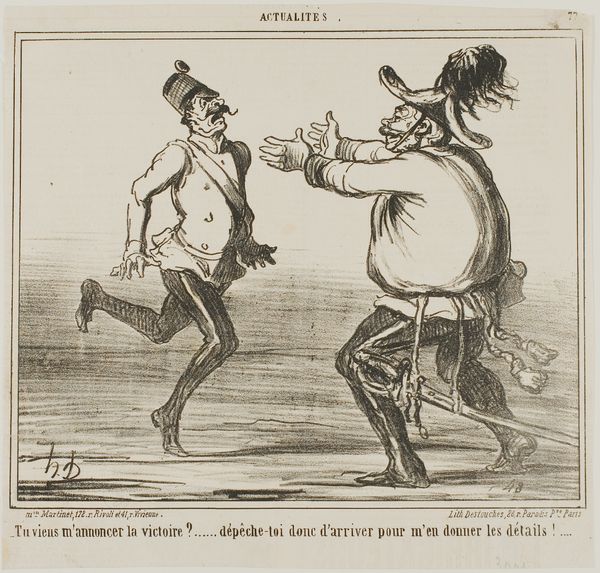
lithograph, print
#
16_19th-century
#
lithograph
# print
#
caricature
#
romanticism
#
genre-painting
#
history-painting
#
realism
Copyright: National Gallery of Art: CC0 1.0
Here we see Honoré Daumier’s lithograph, "Tableau... de l'empire de russie." immediately strikes the eye with its stark contrasts and caricature-like figures. The composition is brutally simple, four men in a line each holding a whip. The figures are rendered with bold lines. The lack of colour intensifies the raw emotional impact of the scene. Daumier uses the linear quality of the lithographic medium to create a narrative of oppression. Each figure's posture, bent and submissive, is defined by sharp, angular lines. The whips, rendered as curving, dynamic forms, stand in stark contrast to the men's static poses, suggesting a cyclical pattern of abuse. Through structural oppositions—the straight versus the curved, the static versus the dynamic—Daumier constructs a powerful commentary on power and subjugation. The image destabilizes traditional notions of authority by portraying the wielders of power as grotesque and the subjects as defeated. The lithograph's formal qualities reinforce its semiotic function. The absence of embellishment directs our focus to the essential elements of domination, inviting viewers to decipher its underlying message. As such, it offers no resolution but serves as an enduring symbol of social inequality.
Comments
No comments
Be the first to comment and join the conversation on the ultimate creative platform.
